Through the lens of history’s most influential photographers, Ontario’s provincial parks and wilderness areas have been transformed from mere landscapes into timeless works of art. From Ansel Adams’s revolutionary black-and-white compositions that forever changed how we view nature, to Dorothea Lange’s powerful documentation of human resilience during the Great Depression, these visionary artists didn’t just capture moments – they shaped our collective understanding of the world around us. Their groundbreaking techniques and unwavering dedication to their craft have inspired generations of photographers who continue to explore the delicate relationship between humanity and the natural world. As we delve into the stories of these remarkable individuals, we’ll discover how their innovative approaches to composition, lighting, and subject matter have influenced modern photography and continue to inspire visitors to our parks today. Whether you’re an aspiring photographer or simply appreciate the art of visual storytelling, these pioneers’ work offers timeless lessons in seeing the extraordinary in the ordinary.
Early Pioneers Behind the Lens
M.O. Hammond: Capturing Wilderness
M.O. Hammond’s photography brought Ontario’s wilderness to life during the early 1900s, capturing both the raw beauty of untamed landscapes and the rich cultural heritage of Indigenous communities. Through his lens, Hammond documented the pristine state of what would later become some of Ontario’s most beloved provincial parks.
As a photographer for the Toronto Globe newspaper, Hammond ventured into remote areas that few settlers had explored. His black-and-white photographs of towering white pines, mist-shrouded lakes, and rugged Canadian Shield outcrops helped spark public interest in wilderness preservation. These images played a crucial role in building support for establishing protected park areas across the province.
What set Hammond apart was his respectful approach to photographing Indigenous peoples. Unlike many photographers of his era who staged artificial scenes, Hammond sought to capture authentic moments of daily life, traditional practices, and cultural ceremonies. His photographs of Ojibwe and Cree communities in Northern Ontario remain valuable historical records today.
Photography enthusiasts can still find inspiration in Hammond’s work. His careful composition and use of natural light demonstrate timeless techniques that modern photographers can apply. Many of the locations he photographed remain accessible in today’s provincial parks, allowing visitors to stand where Hammond once set up his tripod and experience these enduring landscapes for themselves.
The Royal Ontario Museum now houses Hammond’s extensive collection, preserving these important visual documents of Ontario’s natural and cultural heritage for future generations.
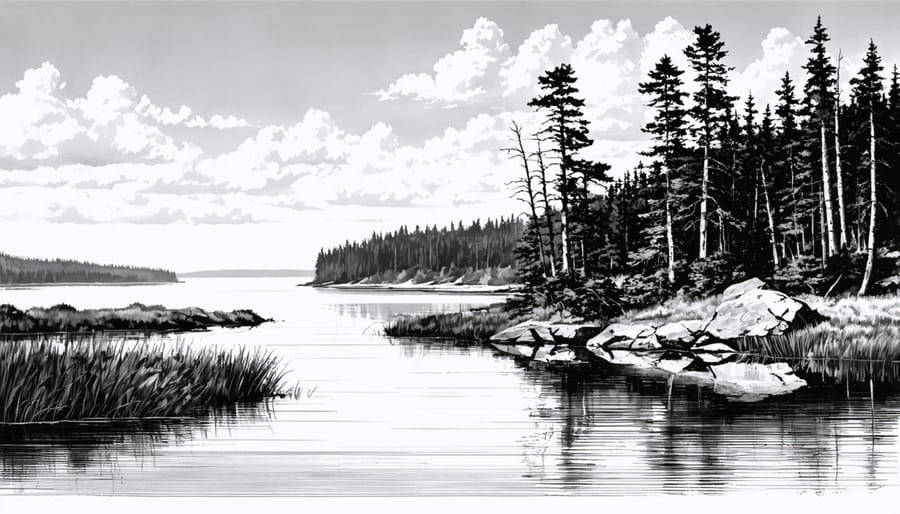
The Alexander Family Legacy
The Alexander family’s photographic legacy in Algonquin Park spans three generations, offering an unparalleled visual chronicle of the park’s evolution from 1908 to the present day. John Alexander Sr. first arrived with his wooden view camera in the early 1900s, capturing stunning black-and-white images of virgin forests, pristine lakes, and early park rangers at work.
His son, John Jr., took up the mantle in the 1940s, documenting the park’s transformation during the post-war tourism boom. His color photographs showcased the growing popularity of camping, canoeing, and wildlife watching, activities that would become synonymous with Algonquin’s identity. Many of his images became iconic park postcards, inspiring countless visitors to explore Ontario’s wilderness.
Today, Jeff Alexander continues his family’s tradition, combining modern digital techniques with his grandfather’s eye for composition. His work focuses on environmental conservation, capturing both the timeless beauty of Algonquin and the challenges it faces in the 21st century. The Alexander Collection, housed in the Algonquin Park Visitor Centre, features over 3,000 photographs spanning 110 years of park history.
For photography enthusiasts visiting today, the spots where the Alexanders created their famous images are marked by interpretive plaques, offering unique opportunities to capture the same views through a modern lens while reflecting on how the park has changed – or remained wonderfully unchanged – over the decades.
Mid-Century Masters
Everett Moore: The Parks’ Storyteller
From 1923 to 1948, Everett Moore captured the untamed beauty of Ontario’s provincial parks through his masterful lens, becoming one of the most influential figures in early park photography. As Ontario Parks’ first official photographer, Moore didn’t just document landscapes – he told stories that would inspire generations of nature enthusiasts.
Armed with his bulky 8×10 view camera and glass plate negatives, Moore would often spend weeks in the wilderness, waiting for perfect lighting conditions to capture the essence of places like Algonquin and Quetico. His dedication paid off in breathtaking black-and-white photographs that showcased Ontario’s natural heritage in ways never seen before.
What set Moore apart was his ability to capture both the grandeur of park landscapes and intimate moments of park life. His photographs of early campers, rangers, and wildlife became valuable historical records of how people experienced these protected spaces in the early 20th century. Many of his iconic shots, like the misty morning canoe on Lake of Two Rivers and the sunset over the Barron Canyon, still grace visitor center walls today.
Moore’s work went beyond mere documentation – it played a crucial role in promoting Ontario’s parks to the public. His photographs appeared in government publications, tourism brochures, and newspapers, helping to establish these natural spaces as must-visit destinations for outdoor recreation and wilderness appreciation.
Today, photographers visiting Ontario’s parks often unknowingly follow in Moore’s footsteps, capturing many of the same vistas that caught his eye nearly a century ago. His legacy lives on through the thousands of images that helped shape public perception of Ontario’s wilderness areas and inspired conservation efforts that continue to this day.
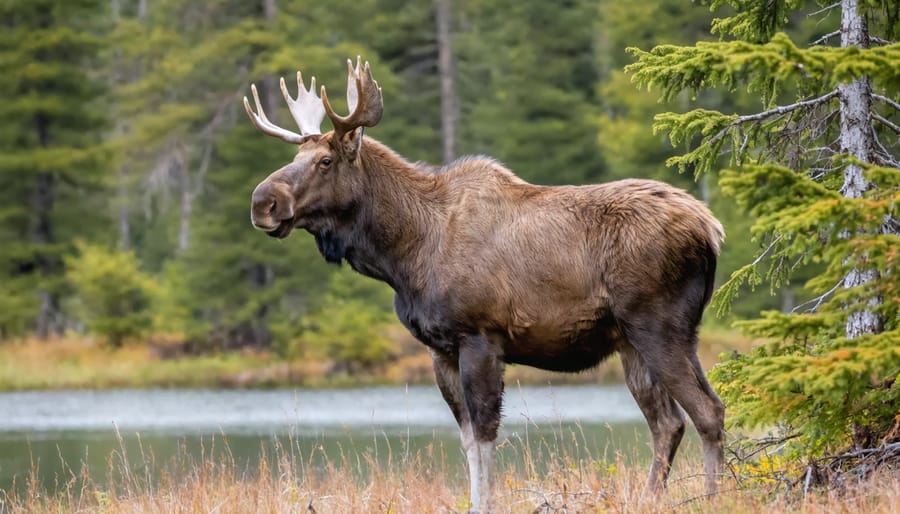
Rex Frost’s Nature Close-ups
Rex Frost’s remarkable contribution to wildlife photography in Ontario Parks during the 1930s and 1940s helped shape how we view and appreciate our natural heritage today. Armed with what was then cutting-edge camera equipment, Frost ventured deep into Ontario’s wilderness to capture intimate portraits of the province’s diverse wildlife.
His innovative use of telephoto lenses and early flash photography techniques allowed him to document animal behavior without disturbing their natural patterns. Frost’s most celebrated works include his series on beaver colonies in Algonquin Park and his striking close-ups of white-tailed deer in their natural habitat.
What made Frost’s work particularly special was his patience and dedication to getting the perfect shot. He would often spend days in carefully constructed blinds, waiting for the right moment to capture his subjects. His detailed field notes, which accompanied many of his photographs, provided valuable insights into animal behavior and habitat preferences.
Frost’s images appeared regularly in Ontario tourism materials and nature magazines, helping to promote the province’s parks as destinations for nature enthusiasts. His work also played a crucial role in early conservation efforts, as his photographs helped document the need to protect various species and their habitats.
Today, visitors to Ontario Parks can follow in Frost’s footsteps, though with much more advanced equipment. Many of his favorite photography spots are now marked with interpretive signs, allowing modern photographers to capture similar perspectives of wildlife while respecting safe viewing distances and park regulations.
Contemporary Visionaries
Rob Stimpson’s Wilderness Art
Rob Stimpson’s lens has captured the raw beauty of Ontario’s wilderness for over three decades, earning him recognition as one of Canada’s most influential nature photographers. His stunning portfolio showcases everything from misty morning landscapes to aurora borealis photography that has graced countless park publications and galleries.
As an artist-in-residence at several Ontario Parks, Stimpson has devoted his career to documenting the province’s natural heritage while advocating for conservation. His work in Killarney Provincial Park resulted in a series that captured the same vistas that inspired the Group of Seven, creating a visual bridge between past and present.
What sets Stimpson apart is his commitment to teaching others. Through his popular workshops and guided photography tours, he’s helped countless visitors develop their own connection with Ontario’s wilderness through the camera lens. His technique of “waiting for the light” has become legendary among park photographers, often involving pre-dawn hikes and patient hours in the field.
His images have played a crucial role in conservation efforts, highlighting the importance of protecting Ontario’s wild spaces for future generations. From showcasing endangered species habitats to documenting the effects of climate change on park ecosystems, Stimpson’s work serves both artistic and educational purposes.
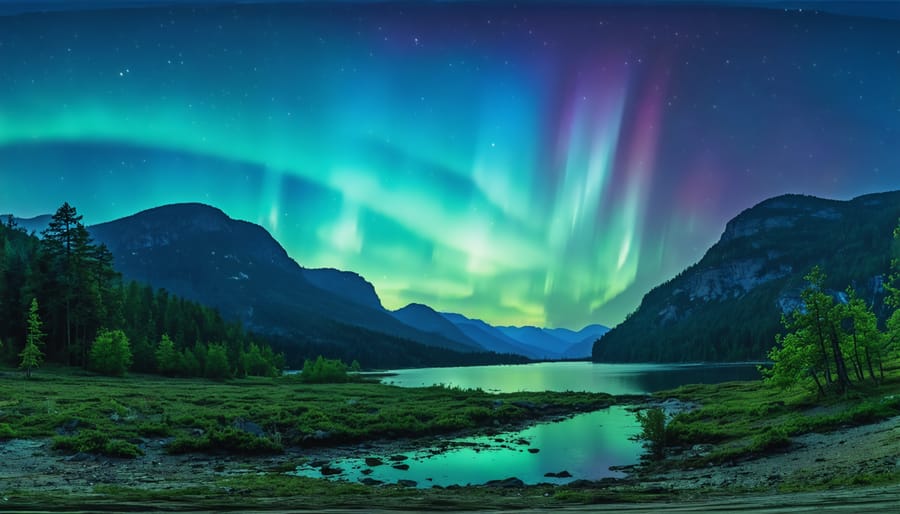
Peter Baumgarten’s Digital Evolution
Peter Baumgarten represents the exciting evolution of park photography in the digital age. As an Olympus Visionary photographer based in Manitoulin Island, he’s embraced modern technology to capture Ontario’s wilderness in ways early photographers could only dream of.
Unlike his predecessors who lugged heavy equipment through the wilderness, Baumgarten carries lightweight mirrorless cameras that allow him to venture deeper into Ontario’s parks. His work showcases how digital innovation has transformed nature photography, from capturing split-second wildlife moments to achieving perfect exposure in challenging lighting conditions.
What sets Baumgarten apart is his dedication to teaching others. Through workshops and social media, he shares techniques that combine traditional composition principles with modern tools like focus stacking and HDR photography. His popular night sky photographs of places like Killarney Provincial Park demonstrate how today’s cameras can reveal natural wonders invisible to previous generations of photographers.
Despite all the technical advances, Baumgarten emphasizes that the photographer’s connection to nature remains paramount. He encourages aspiring photographers to spend time observing and understanding their subjects, just as the pioneers of park photography did. His work proves that while equipment has evolved, the goal remains the same: sharing Ontario’s natural beauty to inspire conservation and appreciation of our parks.
Their Lasting Impact
The photographs captured by these pioneering artists continue to shape our relationship with Ontario’s natural spaces today. Their work serves as both a historical record and a catalyst for modern conservation efforts, reminding us of the pristine beauty that once existed and what we stand to lose without proper stewardship.
Many of these historic images are now used by conservation organizations to demonstrate the importance of protecting our wilderness areas. By comparing century-old photographs with current landscapes, environmentalists can effectively illustrate both the resilience of nature and the impact of human activity, making a compelling case for preservation.
The photographers’ work has also become an invaluable resource for park planning and restoration projects. When rehabilitating historic sites or planning trail systems, park managers often reference these early photographs to understand how the landscape has changed and to guide their efforts in maintaining the natural character of these spaces.
For today’s visitors, these historic images enhance the park experience in unexpected ways. Many trails now feature interpretive panels showing then-and-now comparisons, allowing hikers to stand in the exact spots where these photographers once set up their cameras. It’s a powerful way to connect with the past while appreciating the present.
The influence extends to modern photography as well. Many contemporary photographers draw inspiration from these early works, attempting to capture the same locations in different seasons or lighting conditions. This has given rise to popular photo challenges and social media trends that encourage visitors to document their own park experiences.
Perhaps most importantly, these historical photographs continue to inspire new generations of nature enthusiasts and conservationists. They remind us that the parks we enjoy today exist because someone thought to preserve them, and they challenge us to think about what we want to preserve for future generations.
Pro tip: Many visitor centers throughout Ontario Parks display collections of historical photographs. Take time to view these exhibits before hitting the trails – they’ll give you a deeper appreciation for the landscapes you’re about to explore.
Today’s photographers continue the rich legacy of their historic predecessors, capturing the timeless beauty of Ontario’s parks through modern lenses. While technology has evolved dramatically since the first park photographers ventured into the wilderness with their bulky equipment, the fundamental mission of documenting and preserving park heritage remains unchanged.
These early photographers didn’t just take pictures; they helped create a visual narrative that continues to inspire conservation efforts and connect people with nature. Their work reminds us that every photograph taken in our parks today adds to this ongoing story, documenting changes in landscapes, wildlife patterns, and human interaction with these precious spaces.
For modern visitors wielding smartphones or professional cameras, these historic photographers offer valuable lessons about patience, perspective, and respect for nature. Their dedication to capturing perfect moments, often waiting hours in challenging conditions, teaches us that meaningful photography requires more than just pointing and shooting.
As we look to the future, photography remains a powerful tool for environmental awareness and conservation. Whether you’re a professional photographer or a casual visitor sharing snapshots on social media, your images help document our parks’ evolution and inspire future generations to protect these natural treasures. Remember, every picture you take becomes part of our parks’ living history, continuing the important work started by these pioneering photographers.





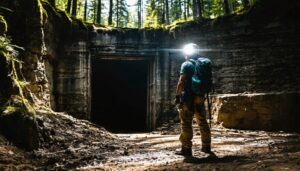
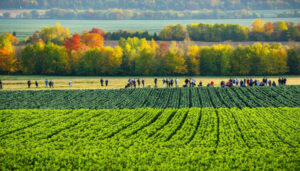

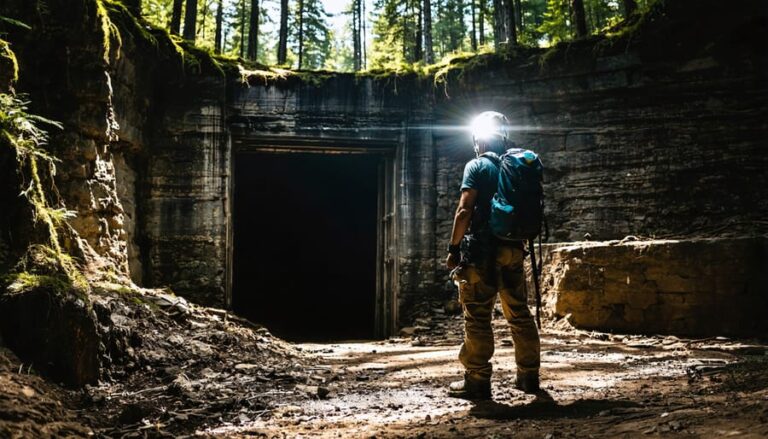
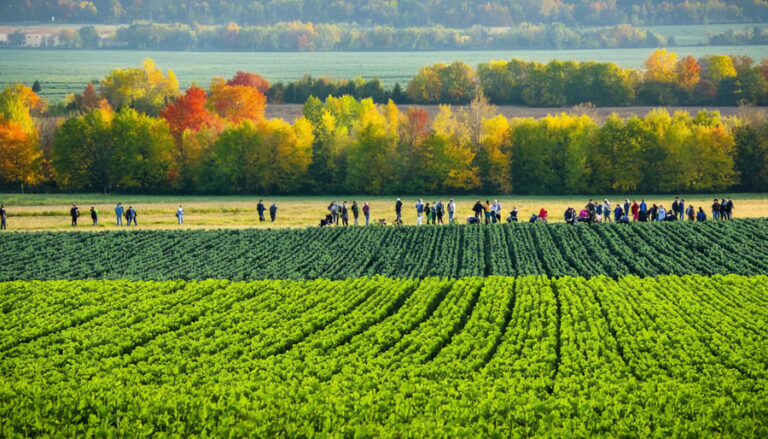




+ There are no comments
Add yours